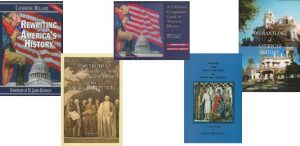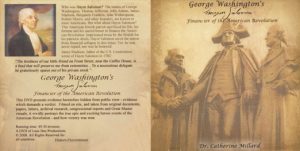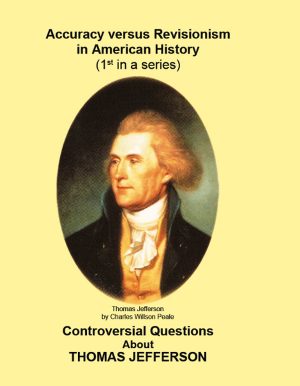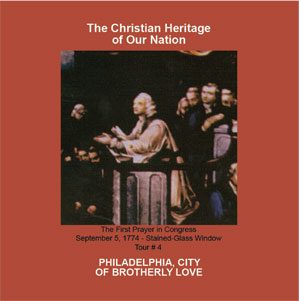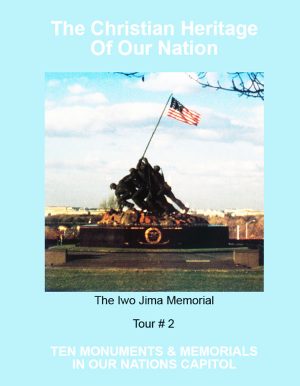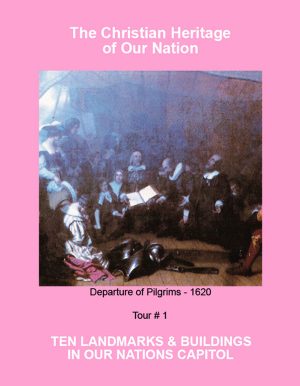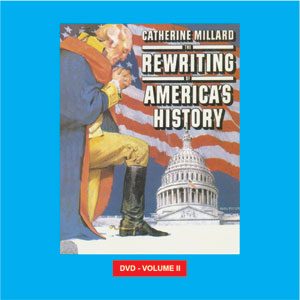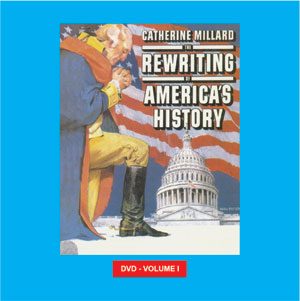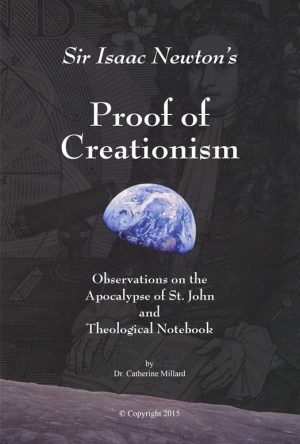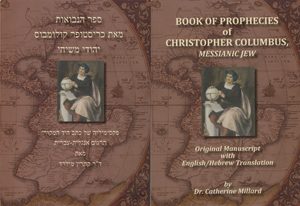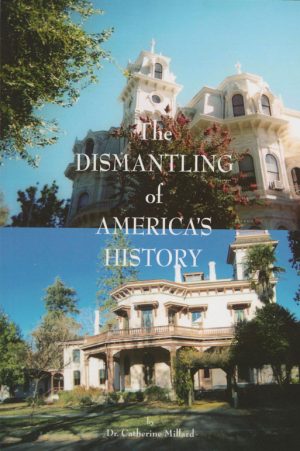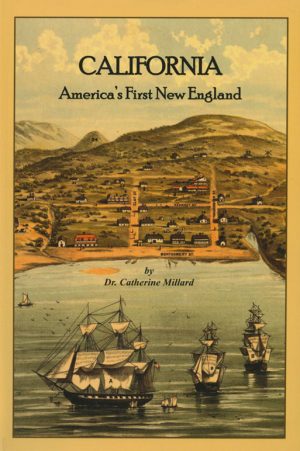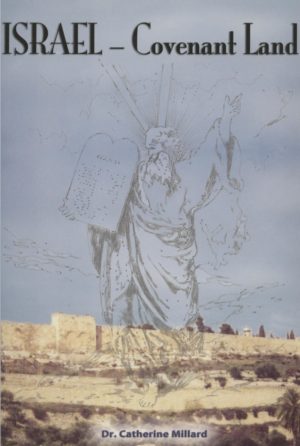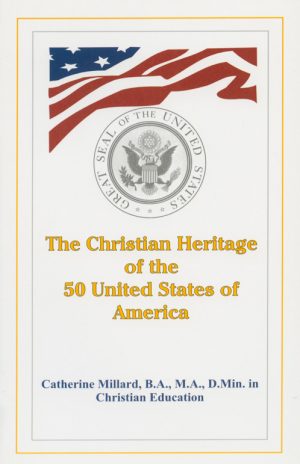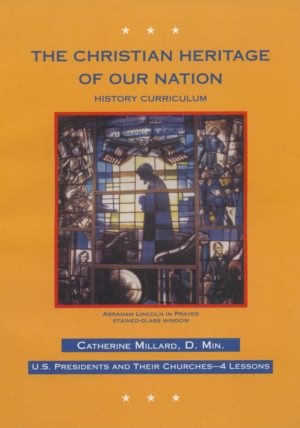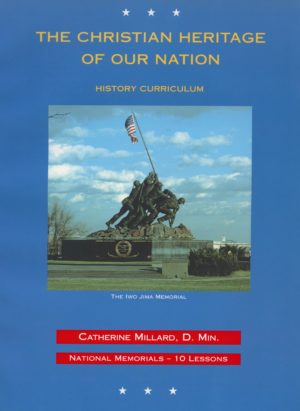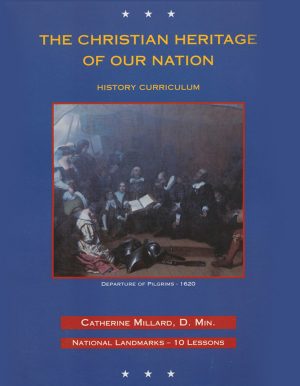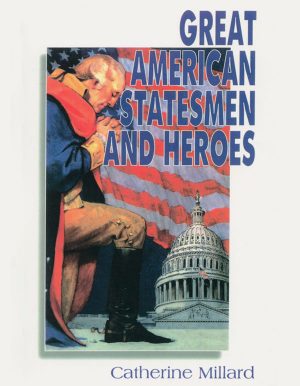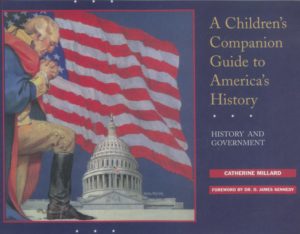On September 5, 1774, the first convening of Congress under the Articles of Confederation took place in Carpenters’ Hall, Philadelphia. The exquisite, federal-style structure is designed in the shape of a cross. Upon entering the building, one is greeted with a mosaic tile emblem and its exhortation: Honor God. The delegates actually met in Carpenters’ Hall from September 5 to October 26, 1774.
One of their first official acts was to invite Jacob Duché, Rector of Christ Church, called “the nation’s church,” to open the first Congress with prayer. Subsequently, he was invited to serve as first chaplain to Congress. In opening the session, he selected, very appropriately, Psalm 35 to be read in its entirety:
Plead my cause, O Lord, with them that strive with me:
Fight against them that fight against me.
Take hold of shield and buckler,
And stand up for mine help.
Draw out also the spear, and stop the way against them that persecute me:
Say unto my soul, I am thy salvation.
Let them be confounded and put to shame that seek after my soul:
Let them be turned back and brought to confusion that devise my hurt.
(Psalm 35:1-4)
Following the reading, he broke out into spontaneous prayer. In corresponding with his wife, John Adams wrote of the event: “I must confess that I never heard a better prayer, or one so well pronounced. It filled the bosom of every man present.”
This tradition of prayer in Congress continues today, each session of both House and Senate opening with Scripture readings and prayer to Almighty God.
A Lost Masterpiece
In 1848, a magnificent painting, entitled “The First Prayer in Congress” was executed by T.H. Matheson. This work of art aptly captures the forefathers’ spirit of humility and dependence on God in accomplishing their difficult task. Since the 1950’s the original of this great Matheson painting which plays an important part in America’s Christian heritage for posterity, has been lost by the overseers of the Independence National Historic Park Museum Collection. In response to my request for a photograph of the original painting, a letter dated 8/18/86 from Doris Fanelli, Supervisory Curator of the Independence National Historic Park, Department of the Interior, Museum Collections, stated the following:
…If you want a photograph of the original painting I’m afraid that we cannot help you. Our files indicate that four scholars unsuccessfully have attempted to locate the original Matheson during the past fifteen years.
Thus we see by the response of the overseers of some of America’s greatest treasures, that this Christian work of art has “disappeared.” A January 1, 1989 official Department of the Interior report prompted by my inquiry, gives a different story – that it was “incorrectly recorded” as an original masterpiece painting at the outset:
Doris Fanelli (Supervisory Curator) states that the original gift to the city of Philadelphia was a print and incorrectly recorded as an original. This would explain why four scholars have not been able to find the original on Park grounds. 1
By this statement, they completely dismiss the issue. This is preposterous, however, as a masterpiece painting of such great value and significance could not possibly be “incorrectly recorded” as an original, and then suddenly materialize into an engraving of the original!
The loss of this treasure is an irreplaceable loss to the American people.
Another letter forwarded to me, this time addressed to Mr. Grant Mydland, Assistant to Assistant Secretary, Department of the Interior, Fish and Wildlife, National Park Service, Washington, D.C., and dated January 12, 1989, stated the following:
…Whether the painting (“The First Prayer in Congress”) exists or not is immaterial because it is not a documentation of the event. It is a history painting, a conjectural piece executed after the fact and intended to evoke emotion in the beholder. T.H. Matheson wasn’t born until 1813. He could not have witnessed the Continental Congress in 1774…Because of its 1848 date, and because it depicts the Continental Congress which met in 1774 in Carpenters’ Hall, we have no opportunity to display the print in our public building…
(signed) Doris D. Fanelli, Ph.D.
Supervisory Curator
U.S. Department of Interior
National Park Service
Independence National Historical
Park, Philadelphia.
The original marker outside Carpenters’ Hall depicted a reproduction of this painting, “The First Prayer in Congress.” However, it was removed in the Spring of 1987 and replaced with a marker bearing secular details, primarily concerning the architecture, windows and construction of this building, once owned by the “Carpenters’ Guild.” The new marker reads:
Carpenters’ Hall, completed in 1724, was the meeting place of a group of Philadelphia master builders known as the Carpenters’ Company. The carpenters banded together to establish architectural standards, to set prices for work and to aid members’ families in times of need. A visitor to Philadelphia in the 1700’s would have seen many buildings designed and constructed by members of the Carpenters’ Co., including the Pennsylvania State House (Independence Hall); Old City Hall, The Pennsylvania Hospital, Benjamin Franklin’s Mansion and their own Carpenters’ Hall. The carpenters aided the leaders of the American Revolution by offering them the use of Carpenters’ Hall. It was here that the first Continental Congress gathered in 1774 to air their grievances against Great Britain.
Once again, the curators have deliberately majored on the minors. The Carpenters’ Company should not be the primary focus. This is the very first thing a visitor reads upon approaching the building. This marker finally mentions the true significance behind Carpenters’ Hall in the last sentence – almost as an afterthought. Only the three concluding lines of this descriptive marker speak of the convening of the Continental Congress. The only reason for the fame of this building is the fact that America’s first Congress convened there, commencing in prayer.
The original marker paid tribute to the significant role Christianity played in the founding of the nation. It showed a large lithograph of “The First Prayer in Congress,” with all 35 Congressmen kneeling in prayer. Thus we see another graphic example of the hidden agenda of these curators: to completely expunge Christianity from America’s history.
In an official Independence National Historic Park, Department of the Interior Report, dated January 1, 1989, on the removal of the original “The First Prayer in Congress” marker, these overseers of America’s founding history state:
“The First Prayer in Congress” is a conjectural projection of the historical event and therefore based on the park’s determination to preserve the accuracy of these treasures must put a high priority on exact references. That is why the painting or lithograph would not have a high profile in an 18th century exhibit. 2
The Department of Interior curators call this historic event conjecture, i.e., an opinion without sufficient evidence or proof, speculation, and glibly dismiss a key historic event. Have these learned curators not bothered to read the documentation they are charged with preserving – such as the Journals of Congress, which are comparable to the present-day Congressional Record? These records were meticulously kept by Charles Thomson, Secretary of Congress. In addition, there are other references from the founders themselves, who were personally present at the meeting. These include John Adams’ correspondence, George Washington’s personal copy of the Journals of Congress, and records from Christ Church; their rector, Jacob Duché, who led the prayers, becoming the first Chaplain to Congress. What more historic proof could one ask for?
To further rewrite America’s foundational history, the Commission on the Bicentennial of the United States Constitution, Scholastic News Handbook, dated February 22, 1989, depicts a sketch of their own making entitled: “The First Prayer in Congress”; designating a fabricated date for this founding period event, namely, April 6, 1789 – almost fifteen years after the actual event occurred in Philadelphia!
Thus we see that, according to the Department of Interior authorities, “the accuracy of the event,” i.e., “The First Prayer in Congress” portrayed by T.H. Matheson, no longer fits their modern standards of historic accuracy.
However, T.H. Matheson’s painting (c. 1848) depicts the event as related by the Journals of Congress, America’s founding fathers’ correspondence and the records of Christ Church…
The above thus reinforces the need for consistency in actions of government custodians of America’s historic treasures…
The park authorities claim they put “a high priority” on exact references. How much more exact could one get? Reading between the lines, it is obvious they will stoop to any level to achieve their goals – the elimination of Christianity and the Bible from America’s history.
Today, Carpenters’ Hall remains a national historic site of great significance and value, being the site where Congress met for he first time; and where the unbroken American tradition of the Congressional chaplaincy began.
Carpenters’ Hall, however, has now been placed in the Independence National Historic Park, Department of the Interior Financial Tour literature. The descriptive wording reads thus:
…Carpenters’ Hall was also associated with the early financial history of the United States…In 1798, the first national bank robbery occurred here to the amount of $160,000.
I submit that the early finances of the United States belong in a bank or the U.S. Treasury, and certainly not as a replacement of the nation’s first Congress’ heartfelt prayer to Almighty God for His blessings upon their new nation.
Since the removal of the exterior marker with its “The First Prayer in Congress” reproduction, the postcards depicting this famous event have also been removed from the racks within Carpenters’ Hall itself, thus leaving no traces whatever of the magnificent Christian history pertaining to America’s origins and the faith of her founding fathers. These forebears sought God’s guidance in their quest for freedom from the tyranny of an alien power.
Here again, the nation has been robbed of her invaluable historic legacy – as recounted to millions prior to its permanent removal.
Learn more, click here.
____________________
Bibliography:
1Dunlop, Becky Norton. (Assistant Secretary for Fish and Wildlife and Parks). Report. United States Department of the Interior: January 1, 1989.
2 Ibid.
